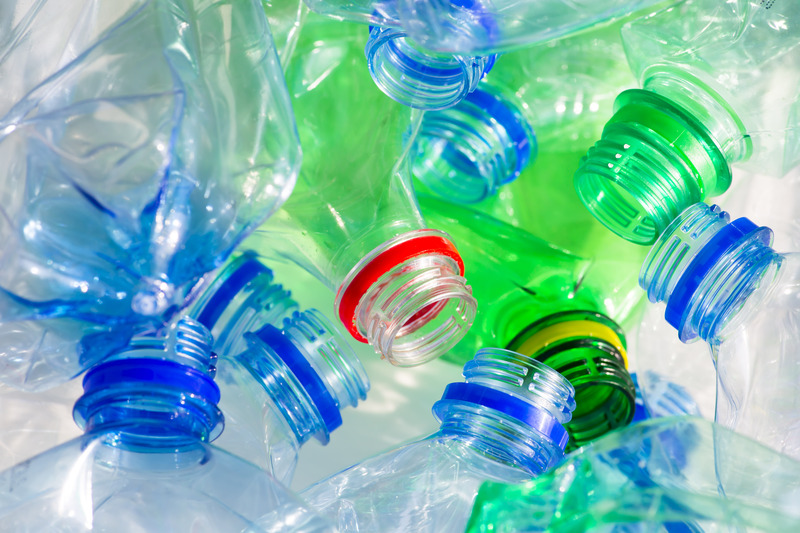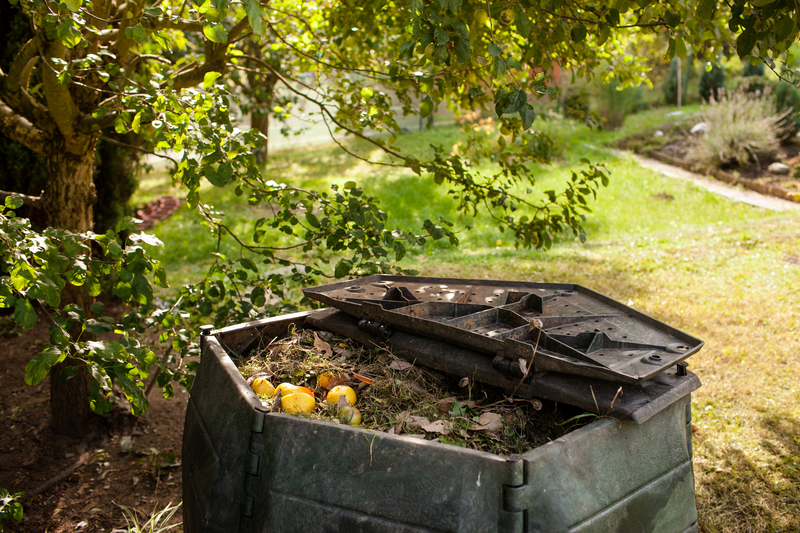A Step-by-Step Guide to Responsible PPE Waste Disposal
The widespread use of Personal Protective Equipment (PPE) such as masks, gloves, gowns, shields, and sanitizing wipes became a norm during the COVID-19 pandemic--and remains essential in healthcare, industry, and daily life. However, improper PPE waste disposal poses significant risks to public health and the environment. Fortunately, there are effective, responsible practices you can adopt for safe and sustainable PPE waste management.
In this comprehensive step-by-step guide to responsible PPE waste disposal, you'll learn how to identify, segregate, handle, and dispose of PPE waste safely, helping safeguard your community and our planet.
Table of Contents
- Why Responsible PPE Waste Disposal Matters
- Step 1: Identify Types of PPE Waste
- Step 2: Segregate PPE Waste Properly
- Step 3: Prepare Safe Containment for PPE Waste
- Step 4: Utilize Proper Waste Removal Methods
- Step 5: Adopt Eco-Friendly PPE Disposal Practices
- Step 6: Comply With Local Laws and Guidelines
- Education and Awareness: Building a Culture of Responsible Disposal
- Frequently Asked Questions About PPE Waste Disposal
- Conclusion: Your Role in Responsible PPE Waste Management
Why Responsible PPE Waste Disposal Matters
PPE items are critical in protecting individuals from infectious diseases, chemicals, and hazardous substances. However, improper disposal of PPE waste has significant environmental and health consequences:
- Environmental Contamination: PPE materials like plastic masks and gloves can persist in landfills for decades, polluting soil and waterways.
- Harm to Wildlife: Animals may ingest or become entangled in PPE litter, causing injury or death.
- Spread of Disease: Used PPE can carry pathogens, including viruses and bacteria, especially if discarded in open areas.
- Legal and Compliance Risks: Businesses and organizations face fines and penalties for violating waste disposal regulations.
Adopting responsible PPE waste disposal practices helps mitigate these threats and fosters a safer, cleaner world for future generations.
Step 1: Identify Types of PPE Waste
The first step in responsible PPE waste disposal is to recognize which items count as PPE waste. This includes, but is not limited to:
- Disposable face masks (surgical and N95)
- Latex and nitrile gloves
- Face shields and goggles
- Protective gowns and aprons
- Shoe covers
- Sanitizing wipes
- Respirators
It is important to distinguish between single-use, contaminated PPE and reusable PPE (which is often cleaned and maintained for extended use). Most disposable PPE used in healthcare, public spaces, and homes should be treated as potential biohazardous waste if contaminated.
Step 2: Segregate PPE Waste Properly
Segregation is a cornerstone of safe and sustainable PPE waste management. Setting apart PPE waste from general garbage helps prevent accidental spread of contaminants and aids in appropriate final disposal. Here are best segregation practices:
Use Color-Coded Bins and Bags
- Yellow bags/containers: For clinical or infectious PPE waste (e.g., used in hospitals, testing facilities, or areas known to be exposed to infectious agents).
- Red bins: For sharps and items potentially contaminated with hazardous substances.
- Blue or Green bins: For non-infectious PPE waste (in some regions).
Label bins clearly and post instructions to minimize confusion and mistakes.
Keep PPE Waste Separate From Recyclables and Food Waste
- Never dispose of PPE in ordinary recycling bins--these items can contaminate recycling streams and pose safety hazards to waste workers.
- Do not mix PPE waste with compost or regular food waste.
Tip: If disposing PPE at home, designate a covered, lined bin for used masks and gloves, separate from household trash.
Step 3: Prepare Safe Containment for PPE Waste
Ensuring safe containment of PPE waste is essential to prevent accidental contact, leaks, or exposure during handling and transport.
- Always use sturdy, leak-proof bags: Double-bag waste if necessary. Yellow clinical waste bags are preferred for healthcare environments.
- Tie bags securely: Seal bags with strong knots or ties. Do not overfill; leave enough room to close bags easily.
- Keep containers covered: Lidded bins help reduce odors, accidental touching, and pest attraction.
- Place bins in accessible, ventilated areas: Avoid overcrowding or blocking access to waste collection points.
Remember: Used PPE should always be handled with clean gloves and hands should be washed thoroughly after managing waste.
Step 4: Utilize Proper Removal Methods
When it comes to removal and transportation of PPE waste, safety must be prioritized both for waste handlers and the public.
For Households
- Check local guidelines: Some municipalities designate specific days or drop-off points for hazardous or clinical waste, including PPE.
- Do not flush PPE: Never flush masks, gloves, or wipes down toilets or sinks--they can clog plumbing and cause pollution.
- Seal and dispose according to protocols: Place bagged PPE waste inside your regular bin only if instructed by your local authority; otherwise, use designated collection points.
For Healthcare Facilities and Workplaces
- Coordinate with licensed waste contractors: Only certified waste management companies should collect and process infectious PPE waste.
- Maintain records: Document the quantity, type, and disposal date for all PPE waste, in line with local regulations.
- Train staff regularly: Ensure all workers understand and follow waste handling and PPE protocols.
Step 5: Adopt Eco-Friendly PPE Disposal Practices
PPE is often made of single-use plastics, but there are ways to reduce your environmental impact:
- Consider reusable PPE: Where possible, opt for washable masks, gowns, or gloves; follow strict cleaning and disinfection protocols.
- Support PPE recycling initiatives: Some manufacturers and recycling partners offer take-back or upcycling programs for certain PPE items (e.g., TerraCycle programs for masks and gloves).
- Reduce use where possible: Avoid unnecessary PPE; use only what's needed based on activity risk and local health advice.
- Spread awareness: Educate others about the risks of PPE litter and benefits of responsible disposal.
Transitioning to sustainable alternatives and proper recycling helps combat the global challenge posed by plastic PPE waste.
Step 6: Comply With Local Laws and Guidelines
PPE waste disposal regulations differ depending on your region and context (e.g., home, business, healthcare facility). Failure to comply can lead to fines, public health risks, and reputational damage.
- Stay updated: Consult your state or local government health department for specific rules on PPE waste handling.
- Follow workplace protocols: Adhere to OSHA, CDC, EPA, or other relevant agency recommendations in your sector.
- Document and report: Keep accurate logs, especially in institutional settings, of PPE use and disposal.
Important: Laws may change during public health emergencies, so always check for temporary advisories.
Education and Awareness: Building a Culture of Responsible Disposal
One of the most effective tools in PPE waste management is public education. By raising awareness in your workplace, school, or community, you can:
- Reduce PPE litter in public spaces
- Decrease infection risks from improperly handled masks and gloves
- Boost recycling and eco-conscious choices
- Create safer environments for waste workers and the general public
Display instructional posters, share social media content, and hold regular safety briefings to reinforce responsible PPE disposal practices.
Frequently Asked Questions About PPE Waste Disposal
Can disposable masks and gloves be recycled?
Most conventional facemasks and gloves are not accepted in regular recycling programs due to contamination risks. Some specialized companies offer recycling, but you should never place used PPE in household recycle bins.
What should I do if my local area doesn't offer PPE-specific collection?
Double-bag used PPE, seal it, and place it in your general waste, unless advised otherwise by your municipality. Never drop it in nature or flush it down toilets or drains.
How should businesses handle large volumes of PPE waste?
Engage a certified hazardous waste management service, maintain rigorous records, and provide staff training in safe PPE waste protocols.
Are biodegradable or compostable PPE options available?
Some manufacturers provide compostable or biodegradable PPE, but these require industrial composting facilities. Always check disposal instructions from the supplier before assuming these can go in green waste bins.
Conclusion: Your Role in Responsible PPE Waste Management
PPE saves lives, but improper disposal endangers our health and our planet. By following this step-by-step guide to responsible PPE waste disposal, you can directly contribute to a safer and more sustainable future.
- Identify all PPE waste correctly
- Segregate and contain PPE using proper bins and techniques
- Dispose of and recycle responsibly, following local laws
- Educate those around you about smarter, safer PPE use and disposal
Small actions compound: Encourage others to act responsibly, support PPE recycling initiatives, and stay informed about evolving PPE waste management recommendations. Together, we can make PPE waste disposal safer and more sustainable for everyone.
Take your next step toward responsible PPE disposal today--for your health, your community, and the environment.


